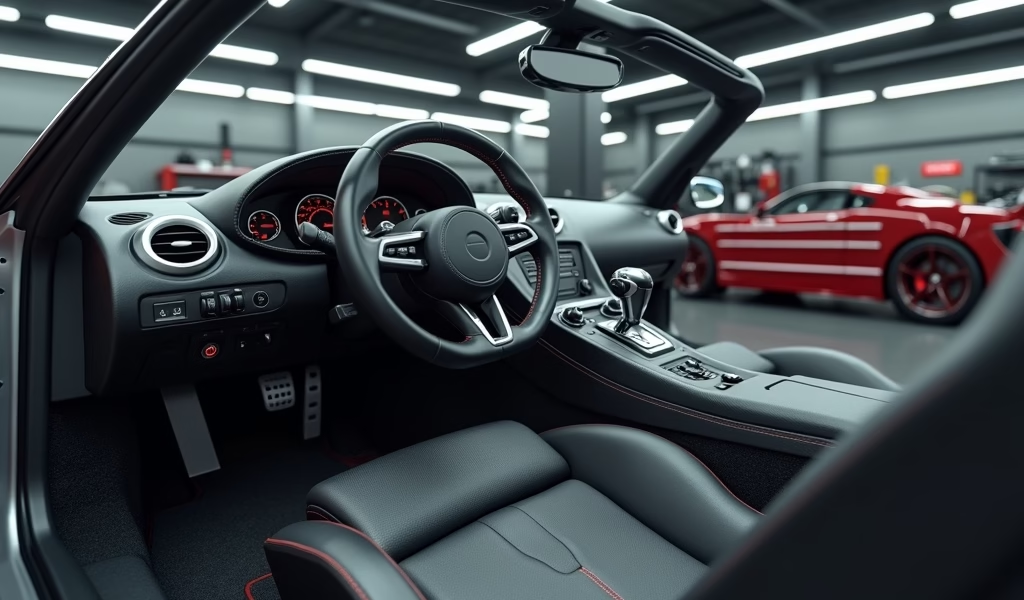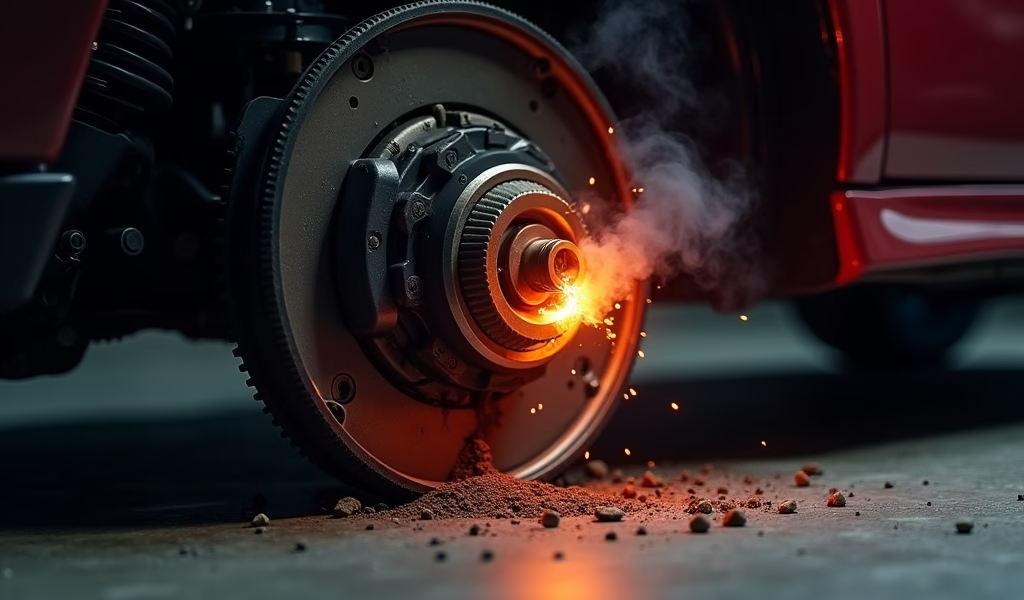Overview
This article explores the advantages and disadvantages of manual transmissions, highlighting enhanced driver control, potential fuel economy benefits, and lower maintenance costs while acknowledging drawbacks like steeper learning curves and traffic fatigue. It provides practical tips for driving and maintaining manual vehicles, concluding that despite their declining market presence, manual transmissions offer a uniquely engaging driving experience for those willing to master the skill.
Table of Contents
- Introduction to Manual Transmissions
- What is a Manual Transmission?
- The Advantages of Driving a Manual Car
- The Drawbacks of Manual Transmissions
- 7 Proven Tips for Manual Transmission Success
- Shopping for a Manual: What to Look For
- Maintaining Your Manual Transmission
- Conclusion: Is a Manual Right for You?
- Frequently Asked Questions
Introduction to Manual Transmissions
The debate around manual cars pros and cons has been ongoing since automatics began dominating the market. As a master mechanic with 25 years under my belt, I’ve watched manual transmissions transform from standard equipment to endangered species. Today, less than 2% of new vehicles sold in America come with a stick shift, yet a passionate community of drivers refuses to let the third pedal fade into history.
There’s something undeniably special about rowing through gears yourself. That mechanical connection between driver and machine creates an experience that modern automatics—despite their technical superiority—simply can’t replicate. It’s why some enthusiasts will drive miles out of their way to find a manual version of their favorite car.
Whether you’re considering your first manual purchase or wondering if your next vehicle should have three pedals, this guide will help you understand the genuine advantages and honest challenges of driving stick. I’ll also share battle-tested tips gathered from decades in the shop and behind the wheel.
What is a Manual Transmission?
A manual transmission, often called a “stick shift,” gives drivers direct control over gear selection through a shifter and clutch pedal. Unlike an automatic transmission that shifts for beginners, manual cars require the driver to disengage the clutch (left pedal), select the appropriate gear with the shifter, and then smoothly reengage the clutch while applying throttle.
This mechanical dance creates a physical connection between you and your vehicle’s powertrain that many drivers find rewarding. The typical manual transmission contains fewer components than its automatic counterpart: a clutch system, input and output shafts, synchronizers, and gears. This relative simplicity contributes to several of the advantages we’ll discuss next.
Modern manual transmissions typically have five or six forward gears, though performance cars may offer seven speeds. Each gear provides a different ratio between engine revolutions and wheel rotations, allowing drivers to optimize power delivery for different driving conditions.

The Advantages of Driving a Manual Car
Enhanced Driver Control
The most celebrated advantage of a manual transmission is the control it provides. As the driver, you decide exactly when to shift, allowing you to maximize power for acceleration or optimize efficiency for cruising. This control becomes particularly valuable in challenging conditions like snow, where starting in second gear can reduce wheelspin, or on steep descents where engine braking helps maintain safe speeds without overheating your brakes.
Many performance drivers prefer manuals because they can keep the engine in its power band more precisely than an automatic. According to Car and Driver magazine, this control advantage still matters even in an era of sophisticated automatics.
Potential Fuel Economy Benefits
Traditionally, manual transmissions offered better fuel economy than their automatic counterparts. While this gap has narrowed significantly with modern transmission technology, a skilled manual driver can still sometimes eke out better mileage compared to the same car with an automatic.
The efficiency advantage comes from the direct mechanical connection and lower parasitic power losses in manual transmissions. Automatics rely on hydraulic systems that inherently consume some engine power. Additionally, manual drivers can optimize shift points for maximum efficiency rather than relying on a computer’s predetermined shift schedule.
Lower Maintenance and Repair Costs
The simplicity of manual transmissions often translates to lower long-term costs. With fewer components to fail, repair bills tend to be less frequent and less expensive. The average clutch replacement (the most common manual transmission repair) runs $700-1,200, significantly less than the $2,000-4,000 typically needed for automatic transmission repairs.
Manual transmissions also require less frequent fluid changes. Most manufacturers recommend changing manual transmission fluid every 60,000-90,000 miles versus every 30,000-60,000 for automatics. This simplified maintenance schedule contributes to lower lifetime ownership costs.
Greater Driving Engagement
Perhaps the most compelling reason people choose manuals is the pure joy they bring to driving. There’s an almost meditative quality to matching revs on a downshift, a satisfaction in nailing a perfect launch, and an undeniable feeling of connection with your vehicle that many find missing in automatics.
This engagement factor transforms even ordinary commutes into opportunities for improvement. Many enthusiasts find that a modest car with a manual transmission provides more day-to-day enjoyment than a more powerful automatic, simply because of the involvement factor.
Anti-Theft Advantage
In an unexpected security benefit, manual transmissions can serve as theft deterrents. With fewer people knowing how to drive stick each year, car thieves often pass over manual vehicles for easier targets. Several documented cases show would-be thieves abandoning theft attempts after discovering they couldn’t operate the manual transmission.
The Drawbacks of Manual Transmissions
Steeper Learning Curve
Learning to drive a manual transmission requires developing muscle memory, coordination, and mechanical sympathy that automatics don’t demand. For new drivers, the prospect of stalling at busy intersections creates anxiety that can overshadow the potential benefits. Mastering a manual typically takes several weeks of regular practice before it becomes second nature.
This learning investment represents a genuine commitment. While most drivers can eventually master manual driving, the process requires patience and persistence through the inevitable stalls and jerky starts that come with the territory.
Traffic Fatigue
The romance of rowing gears quickly evaporates in stop-and-go traffic. The constant clutch work required in congested urban environments can literally become a pain in the left leg. For commuters spending significant time in traffic, this increased physical demand represents a legitimate downside to manual ownership.
This fatigue factor becomes especially relevant in cities with hilly terrain. Maintaining control on steep inclines while managing all three pedals adds another layer of complexity to daily driving that many find exhausting after a long workday.
Resale Considerations
As manual transmissions become less common, the pool of potential buyers for your manual car shrinks. While certain enthusiast models (sports cars and off-roaders, particularly) maintain strong demand with manual transmissions, the average manual-equipped vehicle typically commands less on the used car market due to limited buyer interest.
This resale reality represents a financial consideration for those who replace vehicles frequently. The universe of potential buyers for your used manual car is simply smaller than it once was, potentially extending selling time and reducing sale price.
Diminishing Performance Advantage
Modern automatic transmissions have systematically eliminated most performance advantages manuals once held. Today’s dual-clutch transmissions and sophisticated conventional automatics often deliver faster acceleration, quicker shift times, and even greater control through paddle shifters and advanced driving modes.
For pure performance metrics, manuals no longer hold the crown they once did. Many supercars have abandoned manual options entirely because automatics now deliver superior track times and acceleration figures.

7 Proven Tips for Manual Transmission Success
Master the Clutch’s Friction Point
The key to smooth starts lies in finding the “bite point” where the clutch begins to engage. Practice finding this sweet spot by slowly releasing the clutch without applying throttle until you feel the car begin to move. This exercise builds muscle memory that translates to smoother launches when you add gas to the equation.
Every manual transmission has a slightly different engagement point, so give yourself time to adapt when switching between vehicles. Some clutches engage near the top of the pedal travel while others engage closer to the floor. Learning to feel this engagement point is the foundation of manual driving expertise.
Perfect Your Hill Start Technique
Hill starts intimidate many manual drivers, but a simple technique transforms this challenge into a manageable maneuver. First, secure the car with the handbrake while stopped on an incline. With the brake engaged, find the bite point with the clutch, apply gentle throttle, and only then release the handbrake as you feel the car wanting to move forward.
With practice, you’ll develop the coordination to perform this maneuver without the handbrake, using only your footwork to transition smoothly from brake to gas while modulating the clutch. This skill builds confidence and eliminates the anxiety of rolling backward.
Learn Proper Downshifting
Skilled downshifting not only makes your drive smoother but also extends clutch life and improves vehicle control. When downshifting, match the engine speed to the wheel speed for your target gear by briefly blipping the throttle while the clutch is disengaged. This technique, called rev-matching, reduces drivetrain shock and maintains vehicle balance during spirited driving.
While modern performance cars often include auto rev-matching features, developing this skill yourself delivers a deeper connection to the driving experience. Practice by downshifting one gear at a time until you can consistently execute smooth transitions.
Avoid These Common Mistakes
Several habits can significantly shorten your manual transmission’s lifespan. Never rest your hand on the shifter while driving—this applies pressure to the shift forks, causing premature wear. Similarly, don’t use the clutch as a foot rest, as this partially disengages the clutch and accelerates wear.
Avoid lugging the engine (trying to accelerate in too high a gear), which strains components and reduces efficiency. Finally, complete your shifts—never leave the car in neutral or with the clutch depressed for extended periods, as this causes unnecessary wear on the throwout bearing.
Optimize for Fuel Economy
To maximize fuel efficiency in your manual car, shift up earlier during normal driving—generally between 2,000-2,500 RPM for gasoline engines and 1,800-2,200 RPM for diesels. Skip gears when appropriate (going directly from 2nd to 4th, for instance) during gentle acceleration to keep the engine in its efficiency sweet spot.
Use engine braking by downshifting rather than riding the brakes on long descents, but avoid excessive engine braking in normal driving, as this consumes more fuel than coasting in gear. Remember that modern fuel-injected engines use no fuel during deceleration when in gear, making this the most efficient way to slow down.
Master the Smooth Launch
A smooth start from a standstill impresses passengers and reduces clutch wear. Begin with the clutch fully depressed and apply light throttle to bring the engine to approximately 1,500 RPM. Slowly release the clutch until you feel it begin to engage, then hold it at this friction point while maintaining steady throttle. As the car begins moving, continue gradually releasing the clutch until it’s fully engaged.
This technique requires practice but rewards you with jerk-free starts that feel professional. Focus on smooth, progressive movements rather than speed during the learning process.
Listen to Your Transmission
Your manual transmission communicates its health through sounds and sensations. Grinding when shifting suggests worn synchronizers or improper clutch use. Whining noises often indicate low fluid or bearing issues. Vibration through the shifter may point to worn motor mounts or transmission mounts.
Address these warning signs promptly—transmission problems typically become more expensive the longer they’re ignored. Regular fluid checks and changes prevent many common issues before they develop into major repairs.
Shopping for a Manual: What to Look For
If you’re shopping for a manual transmission vehicle, several factors deserve special attention during your evaluation. Test the clutch engagement point—if it grabs very high in the pedal travel or feels slippery even when fully engaged, budget for a clutch replacement. Check all gears, including reverse, for grinding or difficulty engaging, which could indicate synchronizer wear or internal damage.
Pay attention to how the car behaves on hills. A healthy manual should be able to hold itself on a moderate incline with just the clutch at the friction point. Excessive clutch slippage under load suggests wear that will require addressing soon.
For new car shoppers, manual options remain available in entry-level models from Honda, Toyota, and Mazda, along with performance-oriented vehicles from manufacturers like Subaru, BMW, and Porsche. The top affordable cars with manual transmissions offer particularly good value for enthusiast drivers.
Maintaining Your Manual Transmission
Proper maintenance significantly extends manual transmission life. Follow these guidelines to maximize longevity:
Change transmission fluid according to manufacturer specifications, but consider more frequent changes (every 30,000-50,000 miles) for vehicles driven hard or in extreme conditions. Always use the specific fluid grade recommended by your manufacturer—using incorrect fluid can cause notchy shifting or internal damage.
Address clutch hydraulic system issues immediately. Soft or spongy clutch pedal feel often indicates air in the hydraulic system, while a clutch that doesn’t fully disengage (making it difficult to shift into gear) suggests hydraulic problems or a worn clutch disc.
Consider a transmission fluid analysis if you’re purchasing a used manual car with unknown history. This laboratory test can identify metal particles and contaminants that suggest internal wear before it becomes catastrophic.
Conclusion: Is a Manual Right for You?
The manual transmission stands at a crossroads in automotive history—increasingly rare yet passionately defended by those who appreciate the unique connection it creates between driver and machine. While the market continues to shift toward automatics, manual transmissions offer rewards that transcend performance metrics and convenience factors.
For those willing to master the learning curve, manual cars deliver a driving experience that engages all senses and rewards skill development in ways automatics simply cannot match. Though they require more driver involvement and occasionally create inconvenience, many enthusiasts find this trade-off worthwhile for the enhanced connection and control they provide.
Your decision should ultimately reflect your driving environment, daily needs, and personal preferences. If you value driver engagement and are willing to invest time mastering a new skill, a manual transmission might be the perfect choice to enhance your relationship with the open road.
Frequently Asked Questions
Are manual cars cheaper to maintain than automatics?
Yes, manual transmissions typically cost less to maintain due to their mechanical simplicity and fewer components. The average clutch replacement ($700-1,200) costs significantly less than automatic transmission repairs ($2,000-4,000).
Is it worth learning to drive a manual in 2024?
Yes, learning to drive manual still provides valuable skills and opens up more vehicle options, especially in the used market. The skill also transfers to international driving where manuals remain common.
Do manual cars get better gas mileage?
Skilled manual drivers can sometimes achieve better fuel economy than comparable automatics, though the gap has narrowed significantly. The direct mechanical connection and driver’s ability to optimize shift points contribute to potential efficiency advantages.
Why are manual transmissions disappearing?
Manual transmissions are declining due to improved automatic technology, changing consumer preferences, and manufacturer cost considerations. Modern automatics now match or exceed manuals in performance and efficiency while offering greater convenience.
Can driving a manual in traffic damage the clutch?
Stop-and-go traffic doesn’t inherently damage the clutch but does accelerate normal wear. Using proper technique (fully engaging or disengaging the clutch rather than “riding” it) minimizes excessive wear even in heavy traffic.

